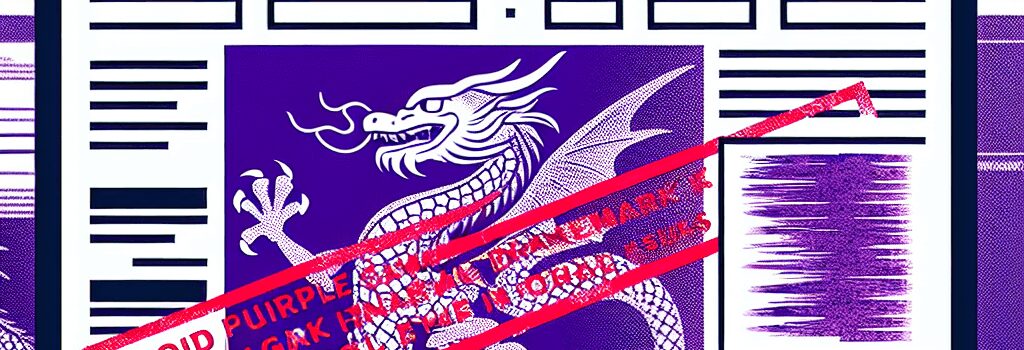Avoid Purple Dragon Watermark Issues in Federal E-Filing

Introduction
In April 2025, Federal Magistrate Judge Ray Kent of the Western District of Michigan issued a pointed admonition: stop watermarking your e-filings with a giant purple dragon in a suit. While branding can be important for law firms in marketing materials, federal courts impose strict technical and stylistic rules on electronic documents. Ignoring those can not only annoy a judge, it can also lead to sanctions, delays, or mandatory refiling under local e-filing protocols.
The Federal E-Filing Landscape
Most U.S. district courts now use the CM/ECF (Case Management/Electronic Case Files) system, which mandates that PDFs comply with PDF/A-1b archival standards. Key requirements include embedding all fonts, ensuring a maximum file size (commonly 25 MB per document), and disabling multimedia or executable content. The Western District of Michigan, like many others, has local rules that forbid “impertinent or scandalous” content, which Judge Kent deemed the dragon logo to be.
Technical Implications of Large Watermarks
- File Size Growth: Embedding a full-color raster image (e.g., a 1,000×1,000 px PNG or JPEG) can add 200–500 KB per page, pushing multi-page briefs over CM/ECF limits.
- Rendering Performance: Transparency and blending modes force PDF viewers like Adobe Reader, Foxit, or open-source muPDF to rasterize layers, which can slow down page turns and impair on-screen review.
- Accessibility and OCR: Court clerks often extract text for indexing. A large image overlay can interfere with text extraction and WCAG 2.0 accessibility checks, potentially violating local accessibility guidelines.
Standards and Best Practices for E-Filing PDFs
To ensure compliance, most e-filing systems recommend:
- Using PDF/A-1b compliance mode in tools like Adobe Acrobat or open-source libraries (iText 7, Apache PDFBox).
- Flattening form fields and watermarks into a single content stream to avoid optional content groups (OCGs), which some e-filing systems reject.
- Embedding XMP metadata with case number, filer name, and UTC timestamps to improve document traceability.
- Opting for vector-based, monochrome headers or simple text banners instead of color logos.
Expert Opinions on Watermark Usage
“Judges want clear, legible documents,” says Laura Chen, Senior PDF Architect at Adobe. “Large embedded images can trigger PDF compatibility warnings and complicate redaction or search. We recommend minimalistic headers and transparent PNGs at 72 dpi if you must include branding.”
Paul Martinez, a courthouse IT consultant, adds: “Many courts now scan e-filings into Intranet CM/ECF archives. If your watermark isn’t pure grayscale, it often shows up as colored noise, which degrades archival quality.”
Legal Ramifications and Compliance
Federal Rule of Civil Procedure 5(d) requires filings to conform to local rules. Non-compliance can trigger an order to refile, as in the Dragon Lawyers case, or worse—monetary sanctions under Rule 11. Judge Kent’s April 28 order forbade further filings using the “juvenile and impertinent” dragon image, underscoring that courts view excessive branding as unprofessional.
Impact of AI Tools on Legal Document Automation
Dragon Lawyers touts its integration of AI to lower costs. Advanced document-assembly platforms (e.g., HotDocs, ContractExpress) can automate cover pages and headers while ensuring compliance with PDF/A and local rules. However, they must be configured to avoid injecting non-compliant assets—such as large color logos—by default.
Conclusion and Best Practices
While it’s tempting to stand out by watermarking legal pleadings with a purple dragon, the federal courts prioritize clarity, accessibility, and standardization. To avoid refilings or sanctions:
- Stick to PDF/A-1b compliance, embed fonts, and keep file sizes below 25 MB.
- Use simple, monochrome headers instead of full-color logos.
- Consult CM/ECF and local court rules before branding e-filings.
- Leverage AI and document-automation platforms responsibly, ensuring they adhere to technical specifications for e-filing.
In federal court, less truly is more. Avoid the temptation of mythical beasts on your briefs—and your filings will pass muster every time.